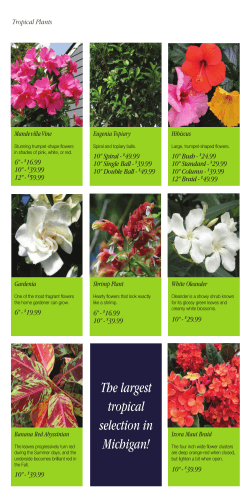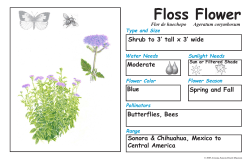
Deadly Nightshade (Solanum dulcamara)
Weed Identification and Control Sheet: www.goodoak.com/weeds Deadly Nightshade (Solanum dulcamara) DESCRIPTION: Deadly nightshade is a weedy member of the Tomato/Potato family originally from Europe and northern Africa. It inhabits disturbed areas such as gardens, field edges, fencelines and shorelines in both shade and sun. It can inhabit dry and wet sites, but is most aggressive in moist soils. This semi-woody and somewhat viney plant has young leaves which are heart or water-drop shaped, but as they mature they develop into three asymetrical lobes. The most distinctive features of this plant are the purple flowers with reflexed pedals and a yellow cone at the center which blooms from late-May to August. The abundant fruit clusters are also distinctive. Initially they are green but mature to a bright red color and persist on the plant into winter. This species will spread and dominate in disturbed conditions, and though it is not particularly competitive against native perennials, it can be invasive in wetland areas. The real threat of this plant is in the toxic nature of its vegetation. The leaves are particularly poisonous and known to be deadly to animals who ingest them. Though the bright red berries are less poisonous, they tend to attract the attention of children and pets and can cause severe illness if consumed. For this reason we recommend removing this non-native plant wherever it is found. CONTROL METHODS: The best time to control this plant is in early summer when its distinctive flowers make it easy to spot before the plants develop seeds. If berries are present when you are removing deadly nightshade it is critical that all plant material be carefully removed so as to avoid spreading the berries around the site. The plants should then be bagged and put in the trash in order to prevent seed spread. Fortunately, populations of this plant are usually small, making hand pulling the simplest and most effective method of control. You should be careful to pull up the root of the plant along with the stem or it will simply resprout. If the stem breaks off, use a trowel or shovel to grub out and remove the root. Larger populations can be managed by repeated mowings (with a mower, weed whip or hand cutting tools), starting when the plants begin to flower and repeated every 3-4 weeks through the growing season. Alternately, the plants can be monitored after the initial cutting and an herbicide, such as glyphosate (Round-Up), can be applied to new leaves as the plants re-sprout from the roots. Home owners may consider smothering the area where the plants are found by spreading cardboard or landscaping fabric and then covering that with 4-6 inches of mulch in order to prevent sprouts and seedlings. The area should be left undisturbed for at least one growing season. Desirable plants could then be planted right through the mulch at a later time. Always read herbicide labels carefully before use and always apply according to the instruction on the product label. NATIVE ALTERNATIVES: There are many native species which could replace deadly nightshade; prairie or woodland species can be selected depending on light conditions. Vines, for example may be desirable in a fenceline area. Virgin’s Bower (Clematis virginiana) is a herbaceous vine with lovely late-summer clusters of white flowers and interesting fluffy seedheads which persist into winter. American Bittersweet (Celastrus scandens) is a woody vine with attractive orange and red berries which hang on the vine through winter providing color and wildlife food and winter color. Both male and female plants should be planted together. Virginia Creeper (Parthenocissus quinquefolia) and Wild Grape (Vitis riparia) are great food sources for wildlife and have attractive fall foliage, however these species are very aggressive, a factor that should be considered before they are planted. All content © Frank Hassler 2015, unless otherwise noted. Updated: 4/21/15
© Copyright 2025












